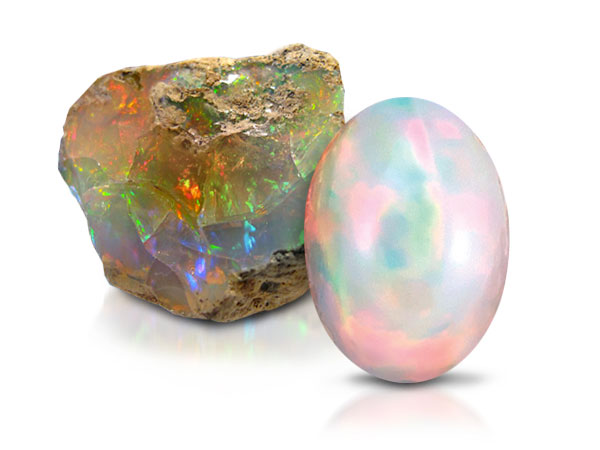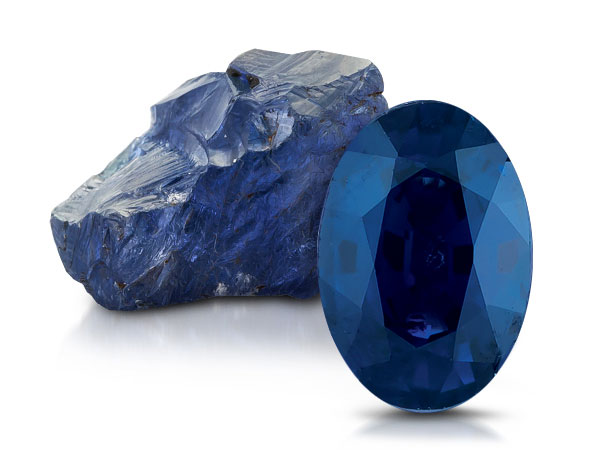NEOPOLITAN OPALTM
The lore of opals is plentiful, just like the variety of colors found in this fascinating, kaleidoscopic gem. The Romans believed it was the most powerful of gems and named the stone "opalus". The Greeks thought opals gave them the power of prediction. Europeans saw a symbol of hope, purity and truth. One famous opal "The Burning of Troy" was given by Napoleon to Josephine.
Internal diffraction is what creates the colors you see in an opal and provides its shimmering iridescence. The colors dependent on the size of the silica spheres within the stone. Small spheres show blue, the largest show red and other colors too. The value is determined by the amount of color play within the stone although for many the colors and patterns favored are personal taste.
Neopolitan Opal™ features an intriguing play of background colors combined with a captivating iridescence which blends deliciously with Le Vian® flavors of gold and diamonds, especially Strawberry Gold® and Chocolate Diamonds®

Bubble Gum Pink SapphiresTM
Corundum Family | Mohs Scale: 9
Throughout history, sapphires have always been associated with the color blue, perhaps most likely due to its name which comes from the Greek word sappheiros (blue stone). Traditionally, sapphire symbolizes truth, sincerity, and faithfulness. In history, clergy members wore the gem to symbolize Heaven. In ancient Greece and Rome, the royals believed sapphires protected them from envy and harm. Sapphires have also been closely associated with romance and the royals, most recently in modern times. In 1981, Prince Charles gave Lady Diana Spencer a blue sapphire engagement ring. The same ring was later given to Kate Middleton by Princess William.
But all sapphires are not blue and, in fact, come in a rainbow of colors including pink, which Le Vian® has chosen for its strawberry pink flavor.
BLUEBERRY SAPPHIRETM
Throughout history, sapphires have always been associated with the color blue, perhaps most likely due to their name, which comes from the Greek word sappheiros (blue stone). Traditionally, sapphire symbolizes truth, sincerity, and faithfulness. In history, clergy members wore the gem to symbolize Heaven. In ancient Greece and Rome, the royals believed sapphires protected them from envy and harm. Sapphires have also been closely associated with romance and the royals, most recently in modern times. In 1981, Prince Charles gave Lady Diana Spencer a blue sapphire engagement ring. The same ring was later given to Kate Middleton by Prince William
But all sapphires are not blue and, in fact, come in a rainbow of colors including varying shades of blue as well as “fancy sapphires” in pink, yellow, orange, lavender, purple. Blues can be pure blue but may have a range from greenish blue to violet blue. The blue in a sapphire is the result of trace elements of iron and titanium; the more iron in the sapphire, the darker the blue.


